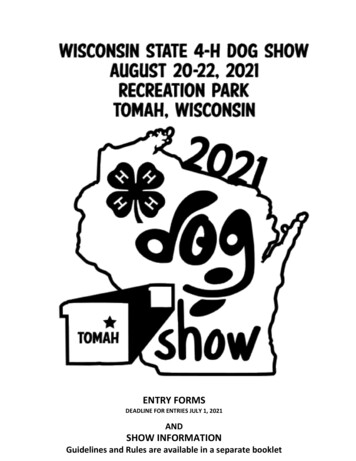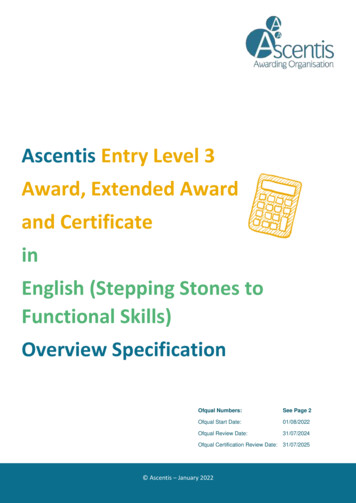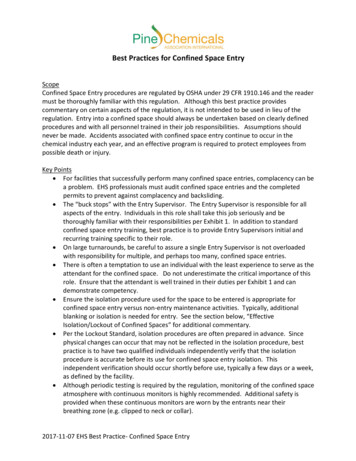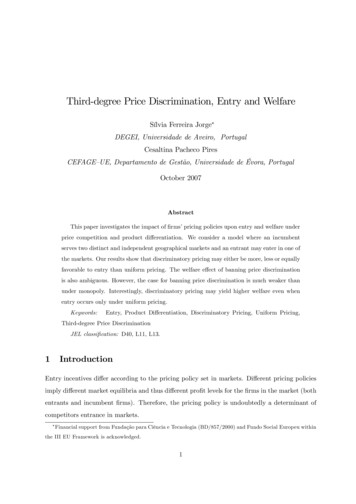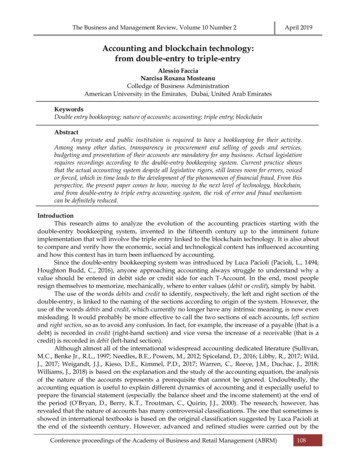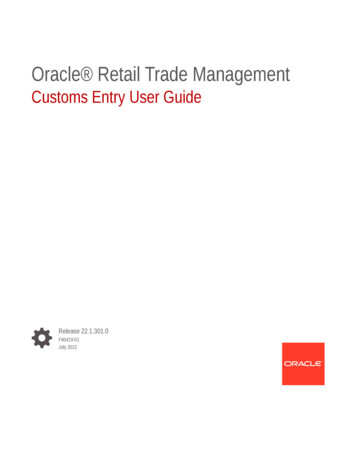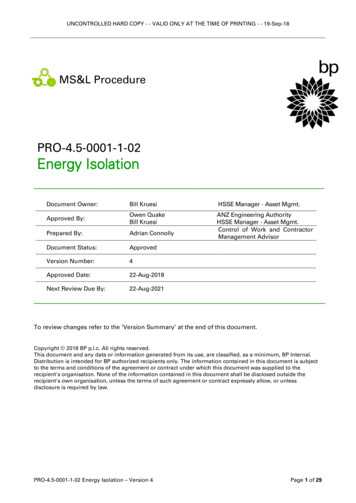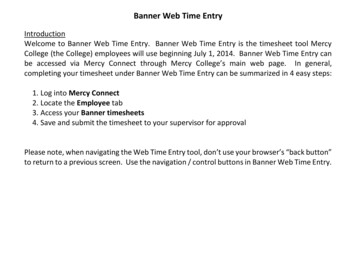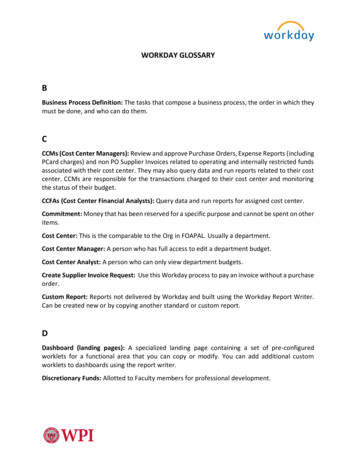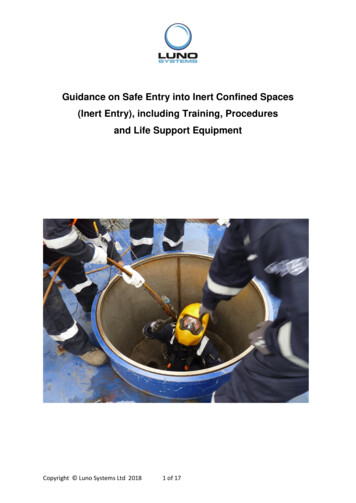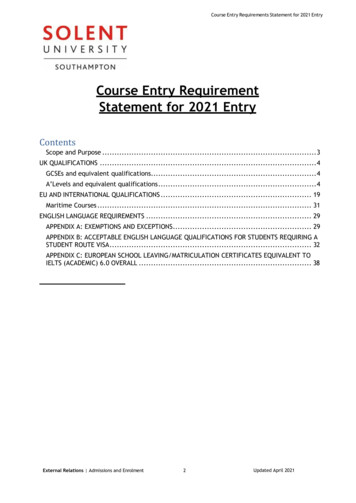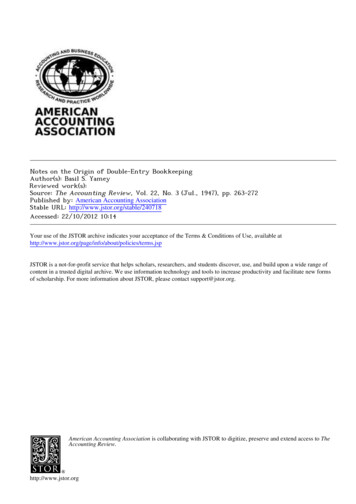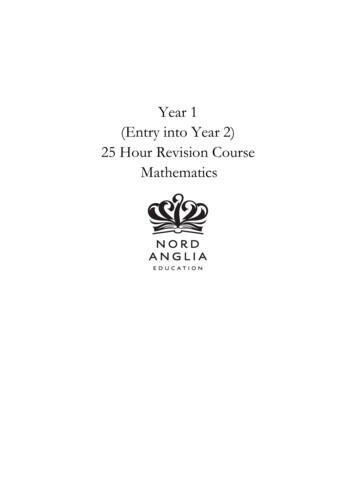
Transcription
Year 1(Entry into Year 2)25 Hour Revision CourseMathematics
Section 1 – Columns for Numbers2 hours
Using Columns for NumbersWhen we first begin to start using numbers, we order them into columns to help us makelarger numbers.In the example below, you can see that above the numbers, we have written Th, H, T, and U.These stand for Thousands, Hundreds, Tens, and Units.From this, you can see that we have 1 Ten and 4 Units. This is read as 14 (Fourteen).In this example, we have 3 Hundreds, 7 Tens, and 8 Units. This is read as 378 (Three Hundredand Seventy Eight)In this example, we have 4 Thousands, 2 Hundreds, 5 Tens, and 6 Units. This is read as 4256 (FourThousand, Two Hundred and Fifty Six)
For each of the following abacuses, please write down how many Tens there are, and how manyUnits there are. When you have done that, write the full number next to Number:
ber:
ber:
Tens:Units:Number:Using the abacuses below, please draw the following numbers;
Section 2 – Word and Number Recognition0.5 hours
Word and Number RecognitionFor this exercise, please draw a line between the number and the word it matches
Section 3 – Counting Objects2.5 hours
Counting ObjectsFor each of the groups below, count how many things are in the group. Please write boththe number, and the word (E.g. Eight and 8)A group of frogs is known as an army.
A group of platypuses is known as a puddle.A group of leaves is called a pile.
A group of apples is called a bunch.
A group of cats is called a clowder
For extra credit, please try to find out what the collective noun for each of the things above.
This page is deliberately left blank.
TallyingSometimes when we have a number of different things to count at once, it can be usefulto tally things up.Anushka has a lot of pets at home, but one evening, they all escaped and found themselves inher garden.
In the table below, please write how many cats, fish, and snakes have escaped fromAnushka’s house.
Section 4 – Simple Addition3 hours
Simple AdditionAdding up means to join two things together in order to make a bigger number.In sums, you will see the symbol ‘ ’, This tells us that we have to add.Below is a sum. Here we have 2 planets plus 1 planet is equal to something. If we add one planet to two planets,we get three planetsTry to work out the sums below
Try to make 3 sums of your own in the space below.
We do not always need to use pictures to count. Let’s take the planet example again. This question can be written as;2 1 Look at the questions below, and try to solve the addition.
Section 5 – Number Bonds1 hours
Number BondsNumber Bonds are simple sums which need to be learnt off by heart. They are very usefulfor teaching us how to count on with numbers above ten.For each of the sums below, please try to work out what the value of the question mark is.The first question has been done for you.
Section 6 – Counting on1.5 hours
Counting on in TensIt is very useful to be able to quickly count on in Tens. To do it, simply add ten to theoriginal number you begin with.For example
Counting on in TwosTo count on it Twos, simply add two to the number before.On the grids below, count on by 2 from the number highlighted. Draw a circle aroundevery second number
Counting on in ThreesTo count on it Threes, simply add three to the number before.On the grids below, count on by 3 from the number highlighted. Draw a circle aroundevery third number
Section 7 – Simple Subtraction3 hours
SubtractionSubtraction means to take away one thing from another in order to make a smaller number.In this way, it is the opposite of addition.In sums, you will see the symbol ‘-’, This tells us that we have to subtract.For example; Here, if we take 2 bikes away from 5 bikes, we are left with 3 bikes. The answer is 3 bikes.Now try the following sums.
Try to make 3 sums of your own in the space below.
As with for addition, we can structure these drawings into written sums. Using our bike example asbefore. This question can be written as;5 2 Try to work out the answers to these sums below.
Section 8 – Greater than or Smaller Than1 hours
Greater Than or Smaller ThanIn Maths, we use the symbols and to express Greater Than or Smaller Than. Whatthe signs mean depends on the numbers either side of it.One good tip for trying to remember which way around the sign goes is to think of the sign asan alligator’s mouth. Alligators like to eat big food, not small food, so the open ‘jaws’ of the signface towards the bigger number.For example;35 is a larger number than 17, so the open jaws point to the 35.32 is a larger number than 16, so the open jaws point to the 32.Now try to work out which way the sign should go for the numbers below;
Now try to make 10 examples of your own, and list them below.
Section 9 – Even and Odd Numbers1 hours
Odd and Even NumbersTo work out whether a number is ODD or EVEN, you need to look at the Units column.If the number in the units column is 1, 3, 5, 7, or 9, then the number is ODD.If the number in the units column is 2, 4, 6, 8, or 0, then the number is EVEN.Work out whether the following numbers are ODD or EVEN
Section 10 – Shapes and Symmetry1.5 hours
ShapesWhat are the names of the following shapes? For each shape, please write how many sidesit has as well.
Lines of Symmetry
Section 11 – Completing the Sequence1 hours
Completing the SequenceLook at the following sequences and try to work out the blanks
Now try to spot the patterns with these shapes
Section 12 – Graphs and Tables2 hours
Reading GraphsTo read the information on a graph, first we need to know what the graph is about. Oftenthey will have a title, or some information written above them. At the bottom will be a list ofoptions, and the other side of the graph will have number values which match to the words at thebottom.For example,Class 2B has 20 pupils in it. Each of the pupils was asked what their favourite fruit is. Their answerswere put into a graph.From this graph we can see that 8 pupils chose Oranges as their favourite fruit.
Now try to answer some questions based on this graph
There are forty cars in the car park. To decide which colour is the most popular for cars, Daviddecides to count them and make a table.
7.
Making GraphsOn the previous pages, we were shown how to read graphs and answer questions based on them.Now it is our turn to make some graphs of our own. To build a graph, we first need someinformation (data) to build it from.Here is a table showing the weather conditions in London in September
Here is another table showing the favourite flavours of crisps of a choir
Section 12 – Measurements5 hours
MeasurementsNumbers can tell us how far away something is, how much it weighs and much more.Here’s a ruler. It’s used to measure short distances.This ruler has lots of small lines on it which are an equal distance apart. On this ruler, the lines area little less than one inch apart.Let’s try measuring a tiny birthday cake:The dotted lines show where the cake lines up on the ruler. The cake is 2 inches long.
Try using the ruler on the page to find the lengths of these shapes:
TemperatureAnother measurement is temperature. When the air feels very hot, then the temperature is high.When it is very cold, the temperature is low. In Dubai, the temperature is usually very high. Wefind the temperature with a thermometer.The picture below shows a thermometer. They have numbers on the side that tell you what thetemperature is. When the temperature is high, liquid in the bottom rises up. The liquid will stop ata number and that is the temperature.The thermometer on the middle says that it is 20 degrees right now. This is a comfortabletemperature but you might want a sweatshirt. The thermometer on the right tells us that it is 30degrees. This is quite warm and is perfect for the beach!If something gets very, very hot it can hurt. Maybe you have picked up a hot cup or piece of metal.Too much heat can cause burns.According to this thermometer below, what is the temperature?
WeightAll objects have a weight. It’s what makes something feel heavy or light. Rocks, cookies,dogs and even the air around us all have a weight.We use scales to find how much things weigh. If we put something very heavy on a scale, it willfall downwards and if we put something light on it, it will not.If the weight is the same on both sides, then the scale is balanced.In the picture below, which side is heavier: right or left?
Since different objects have different weights, we can order them by their weight, or how heavythey are.Which is heavier, a brick or a feather?Which is lighter, a can of soda or a case of soda cans?Which is heavier, a bicycle or an automobile?Which is lighter, a rabbit or a horse?Order the following objects from heaviest to lightest: notebook, pencil, elephant, desk?
TimeThere are 24 hours in a day and 60 minutes in an hour. An hour is a much longer periodof time than a minute. It might take a minute to walk down the block, but it would take an hourto walk across town.Clocks tell us the time. They have a short hand and a long hand. The long hand points to theminutes. The short hand points to the hour. We describe time by saying the hour and then theminutes.The number on the clock tells us the hour. This clock has the short hand pointing between 6 and7, so we know it is between 6 o’clock and 7 o’clock. The long hand is pointing to the number 6.Because 6 is halfway around the circle, the long hand is pointing to the half-hour mark. This meansthat it is pointing to 30 minutes. The time is 6:30.Draw the hour and minute hands on the clock below to show 5:30.What time comes later in the day, 4:00 or 7:00?
DirectionsWe use directions to tell people how to find things and where to go. There are four maindirections: north, south, east and west. You might have heard about the North Pole. That is themost northern place on our planet.Here’s how the directions look on a compass. A compass is a piece of equipment used to telldirection.East and west are opposite directions because they point away from each other. What is theopposite direction of south?If you walk west for awhile and then want to return home, which direction would you walk?If you wanted to go to the south and the east, you would go in a south-east direction. Whatabout if you wanted to go partly to the north and the west?
These stand for Thousands, Hundreds, Tens, and Units. From this, you can see that we have 1 Ten and 4 Units. This is read as 14 (Fourteen). In this example, we have 3 Hundreds, 7 Tens, and 8 Units. This is read as 378 (Three Hundred and Seventy Eight) In this example, we have 4 Thousands, 2 Hundreds, 5 Tens, and 6 Units. This is read as 4256 (Four
